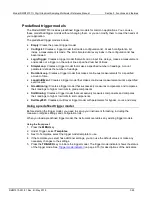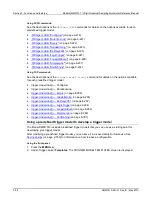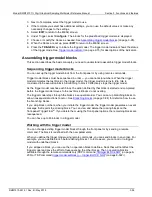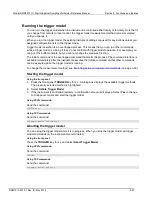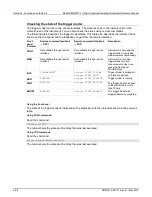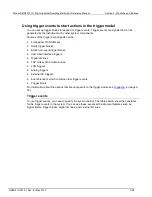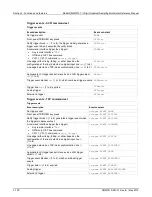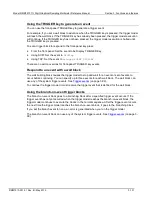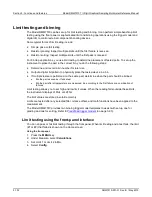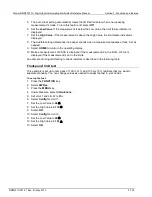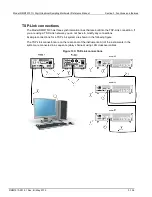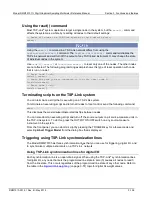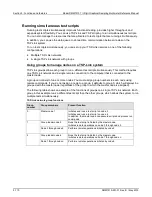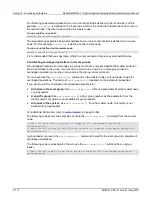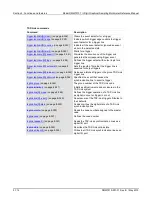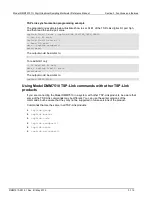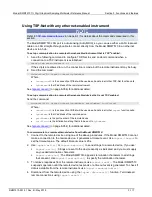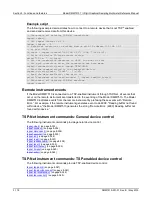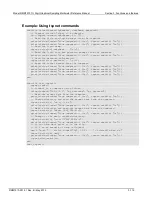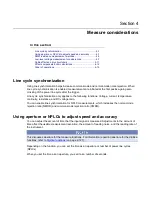
Model DMM7510 7½ Digit Graphical Sampling Multimeter Reference Manual
Section 3: Functions and features
DMM7510-901-01 Rev. B / May 2015
3-107
To assign a node number using a remote command:
Set the
tsplink.node
attribute of the instrument:
tsplink.node =
N
Where
:
N
= 1 to 64
To determine the node number of an instrument, you can read the
tsplink.node
attribute by
sending the following command:
print(tsplink.node)
The above
command outputs the node number. For example, if the node number is 1, a
1
is
displayed.
Master and subordinates
In a TSP-Link
®
system, one of the nodes (instruments) is the master node and the other nodes are
the subordinate nodes. The master node in a TSP-Link
®
system can control the other nodes
(subordinates) in the system.
A TSP-Link system can be stand-alone or computer-based.
In a stand-alone system, scripts are loaded into the instruments. You can run a script from the front
panel of any instrument (node) connected to the system. When a script is run, all nodes in the system
go into remote operation. When the script is finished running, all the nodes in the system return to
local operation, and the master/subordinate relationship between nodes is dissolved.
In a computer-based system, you can use a computer and a remote interface to communicate with a
single node in the system. This node becomes the interface to the entire system. When a command
is sent through this node, all nodes go into remote operation. The node that receives the command
becomes the master and can control all of the other nodes, which become its subordinates. In a
computer-based system, the master/subordinate relationship between nodes can only be dissolved
by performing an abort operation. For more information about remote interfaces, see Remote
communications interfaces.
When linking with earlier models of Keithley instruments such as the Model 2600B, make sure to use
the Model DMM7510 as the master node and the earlier instruments as subordinates.

